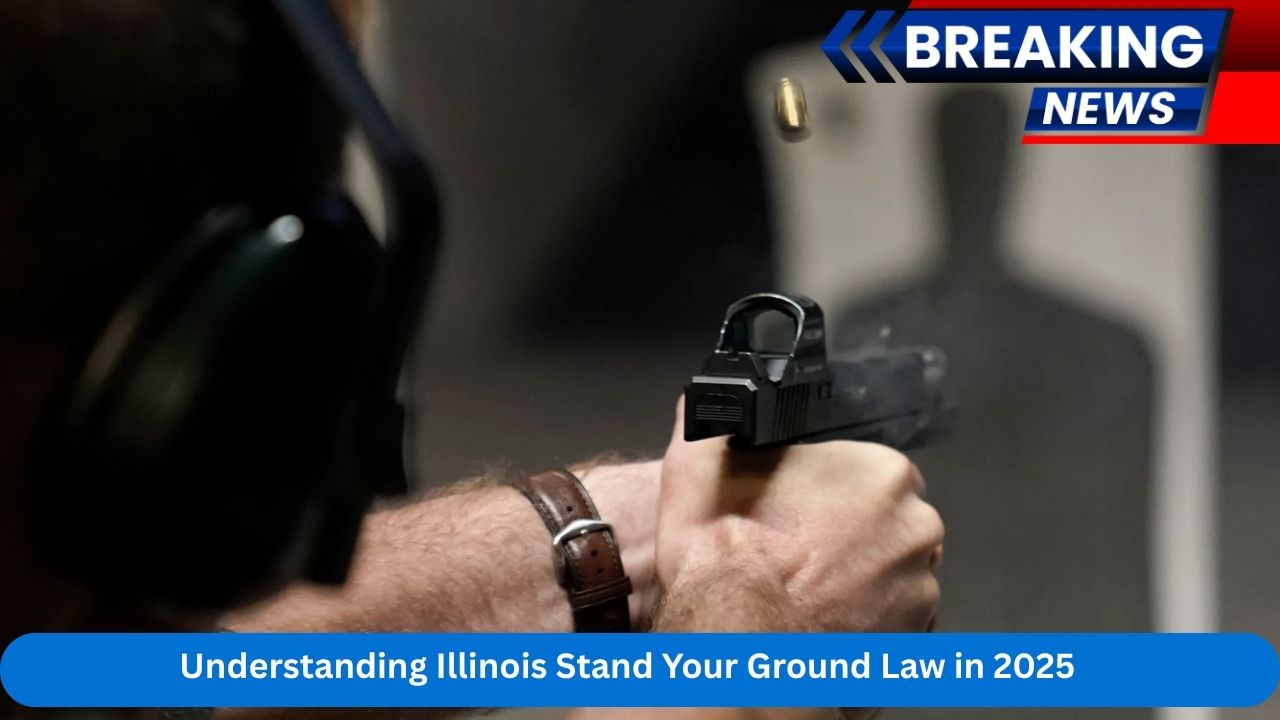Illinois does not have a label “Stand Your Ground Law” like some other states, but its self-defense statutes and case law have evolved to a position that functionally mirrors many stand-your-ground principles—though with important nuances. As of 2025, understanding how Illinois handles self-defense—from public spaces to your own home—is vital to residents in Chicago, Springfield, Peoria, and beyond.
Origins and Evolution of Illinois Self-Defense Law
Historically, Illinois followed the common-law “duty to retreat” in public settings, reflecting a cautious approach toward use of force. Over time, court rulings—most notably by the Illinois Supreme Court—softened this stance. Although no explicit statute labeled “stand your ground” was ever passed, high-profile rulings have effectively removed the obligation to retreat for individuals lawfully present in public spaces and facing imminent threats.
At the same time, Illinois has retained a robust castle doctrine: within your home or dwelling, you have no duty to retreat from an intruder, and you may use reasonable, even deadly, force when faced with threats of death, serious harm, or the commission of a forcible felony like burglary or sexual assault.
Key Principles Today: Reasonableness, Imminence & Proportionality
Illinois self-defense law rests on three core principles:
-
Reasonableness: Could an average person in your shoes believe force was necessary?
-
Imminence: Was the threat immediate and unavoidable?
-
Proportionality: Was your response appropriate to the level of danger?
Even in places where you might not technically have to retreat anymore, force is only justified if those conditions are met. This structure prevents misuse—such as resorting to deadly force over minor confrontations.
Public Spaces: Duty to Retreat (Softened)
In 2025, while Illinois courts have largely dismissed the strict duty to retreat, public self-defense remains conditional:
-
If you can safely escape, prosecutors and courts still expect you to do so.
-
However, precedents suggest no legal obligation to run when escape is unsafe or impossible.
In cities like Springfield and Champaign, local prosecutors often review whether retreat was viable when evaluating the reasonableness of force used in public altercations.
Inside the Home: The Castle Doctrine
Within your residence—be it in Peoria, Joliet, or Aurora—you enjoy full castle doctrine protection. You’re allowed to “stand your ground” and use reasonable force, including lethal force, if:
-
An unlawful entry is happening, and
-
You reasonably believe deadly force is needed to prevent harm or stop a felony.
This California-style immunity empowers homeowners to defend their safety without prior retreat.
Defending Others and Property
What about protecting someone else? Illinois law plays fair:
-
You may come to another’s aid if you reasonably believe they face imminent force.
-
Force must still be proportionate and meet those same reasonableness and imminence tests.
When defending property—say, someone breaking into a farmhouse near Rockford—deadly force is only justified to stop a forcible felony, not to recover a stolen tool or prevent trespassing.
Deadly Force: When It’s Justified
Illinoisians can use deadly force only under strict circumstances:
-
Imminent threat of death or serious bodily harm to self or others, or
-
To thwart a forcible felony (e.g., robbery, sexual assault, arson, burglary).
You cannot use lethal force in response to minor threats—like a shove, threat, or nonviolent trespass. This rule ensures lethal force remains a last resort.
Weapons: What You’re Allowed to Use
In 2025, common options for self-defense include:
-
Firearms (with a valid FOID and, if carrying concealed, a license), especially in more rural counties like McHenry or DuPage.
-
Pepper spray, stun guns, and tasers, which require a FOID.
-
Household items, if no other choice exists—but even these must be used appropriately.
Illinois law now includes recent reforms like Karina’s Law, aimed at reducing domestic violence risk by limiting firearm access in such cases.
Comparing Illinois to Stand-Your-Ground States
| Feature | Illinois | Stand‑Your‑Ground States |
|---|---|---|
| Label | No explicit law, shaped by court rulings | Explicit statute |
| Duty to retreat (public) | Preferred but not strictly required | No retreat duty |
| Duty to retreat (home) | No retreat under castle doctrine | No retreat duty |
| Force proportionality | Required—force must match threat | Required, though some laws shift burden of proof |
| Deadly force threshold | Imminent death, grievous harm, or forcible felony | Similar but without retreat requirement |
| Civil immunity | Often provided for justified force; not automatic | Usually automatic when conditions met |
Regional Perspectives: How Illinois Courts Apply the Rules
-
Chicago/Cook County: High caseloads lead to careful scrutiny of claims. Juries seek strong proof that retreat wasn’t possible or safe.
-
Downstate courts: In less-dense areas like Springfield or Peoria, juries and prosecutors may be more receptive to self-defense arguments, particularly involving home invasions.
-
Rural mindset: In counties like Grundy or Williamson, community values often align with defensive rights, though state law still controls.
Recent Legal Updates (2023–2025)
-
The Illinois Supreme Court has reaffirmed in key decisions that there’s no statutory duty to retreat in public settings.
-
The legislature debated House Bill 5803 to codify no retreat duty, but it hasn’t become law.
-
The 2025 enactment of Karina’s Law now mandates police removal of firearms from individuals with active domestic violence protection orders—a move with implications for self-defense eligibility in such cases.
Civil Liability: A Separate Path
Even if criminal charges are avoided under a self-defense claim, civil lawsuits may follow:
-
Lower “preponderance of evidence” standard applies in civil court, making liability more likely.
-
Victims or their families can sue for medical costs, pain, or emotional distress—even if criminal prosecutors decline to charge.
Residents in areas like Naperville or Rock Island should understand that legal protection in criminal court isn’t the same as shields against lawsuits.
Typical Scenarios in Illinois
-
Carjacking in Urbana: Victim reasonably fears death, no escape is feasible—deadly force may be justified.
-
Bar altercation in Bloomington: One punch, respondent pulls a gun—likely excessive, no justification.
-
Home invasion in Springfield: Intruder breaks in during night; homeowner fears harm—castle doctrine applies.
Practical Advice for Illinois Residents
-
Always attempt safe retreat in public if you can.
-
Use force only in response to immediate, life-threatening or felony-level danger.
-
When at home, know that castle protections apply—but the perceived threat must still be real and serious.
-
Document incidents: take notes, get witness statements, and notify police promptly.
-
Seek qualified legal counsel immediately after any use-of-force event.
Conclusion: A Balanced Middle Ground
Illinois’s self-defense system in 2025 sits between traditional duty-to-retreat and full stand-your-ground statutes. While you no longer must flee in public if escape is unsafe, the state still demands careful, proportionate responses to threats. Meanwhile, robust castle doctrine protections reinforce your right to defend your home.
But the ultimate safeguard lies in understanding the law and knowing when—and how—to act. Whether you live in Chicago’s urban core, suburban Peoria, or rural Jackson County, knowing your rights and limits is key to legally standing your ground. When in doubt, walk away, de-escalate, or call for help. And if force becomes necessary, act wisely—and be ready to defend your choices in court.












Leave a Reply